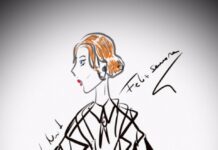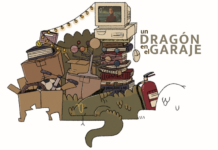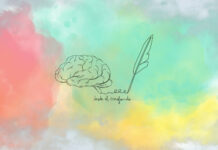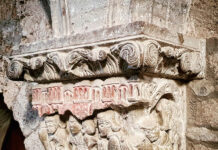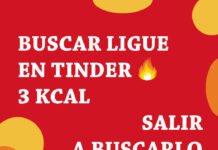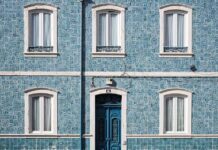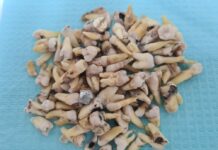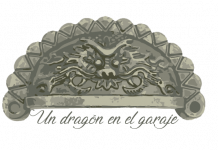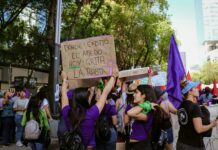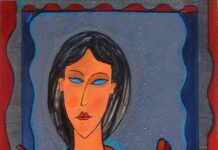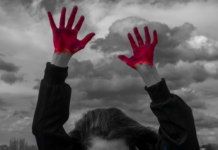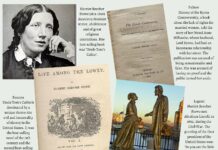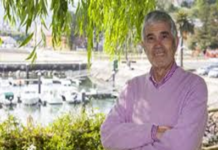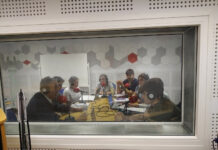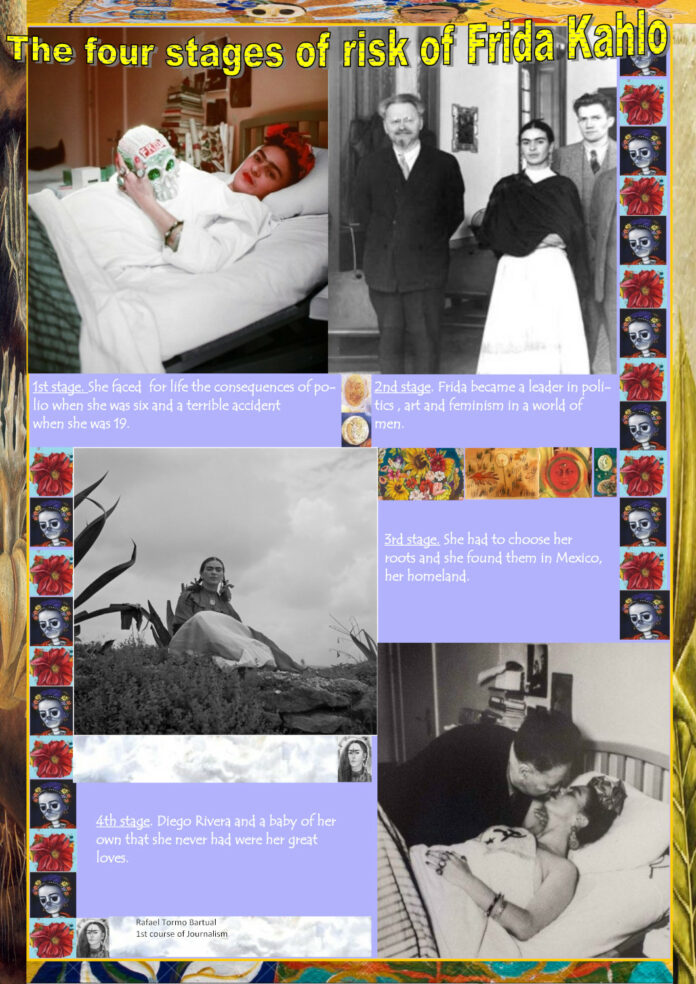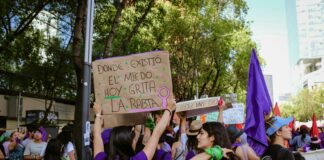| Nationality | Frida Kahlo was Mexican. Her father was mixed German-Hungarian, her mother Mexican-Spanish. Reaching her true roots was perhaps the most basic stage of risk in her life. |
| Historical birthplace (s) / Point out the several geographical area(s) that she lived and her circumstances,
|
She was born in Coyocoan, Mexico City, on July 6th. She also lived with her husband, the painter Diego Rivera in the USA: San Francisco, NY and Detroit. They briefly lived in Paris. In 1933, after a political incident —Diego wanted to represent Lenin in a mural for Rockefeller Center, the image was finally erased— the couple moved back to Mexico, to San Ángel. In the end, she died in her beloved Blue House, in her birthplace, Coyocoán, Mexico city |
| Religion / Ideology
|
Her father was Jewish, not devout. Her mother was a Christian. She herself wasn’t Jewish nor Christian. She is considered as an atheist. But, according to some sources, she practiced a kind of pantheism in relation to Nature. Politically, Frida was a communist. |
| Marital Status (marriage(s), (children)
|
She and Diego Rivera were married twice, in 1929 and 1940. Both marriages were full of trouble and stormy situations. They had no children. The physical impossibility of motherhood was a source of deep frustration for Frida. Her love for Diego and for that baby she never had was one of her stages of risk. |
| Education
Mexico: USA: |
In Mexico, she studied at the prestigious ‘Escuela Nacional Preparatoria’ in Mexico City. She was one of only 35 girls in a institution with 2,000 boys. In the USA, she rejected the values of capitalist society. Frida carefully constructed and developed her Mexican condition. She even changed her birth date from 1907 to 1910, the beginning of the Mexican revolution. Also, she erased the ‘e’ from ‘Frieda’. ‘Frida’ was more Mexican. |
| Your points of view about the main themes of Frida Kahlo artistic work.
|
Frida Kahlo’s art was mostly about Frida Kahlo herself. She practiced the self-portrait as an interpretation of reality. Her painting of herself between Mexico and the USA, between the ground and the industry, in the Casa Azul, with Diego Rivera were universal portraits of dichotomies between the individual and the Universe. |
| Explain BRIEFLY the main themes of the following paintings:
Self-Portrait on the Borderline Between Mexico and the United States, 1932 The Two Fridas, 1939 Self-Portrait with Thorn Necklace and Hummingbird, 1940 The Wounded Deer, 1946 Other artistic works: |
Self-Portrait on the Borderline Between Mexico and the United States, 1932
The painter was not especially happy in the United States. She hung out with high society, but at the same time she missed her roots in Mexico. She felt the division between Mexican nature and the North American industrial world. That was another of her stages of risk. The Two Fridas. 1939 In this painting, Frida expresses how she cuts her most intimate ties (her heart, the veins) between her European ancestors and her deep Mexican nature. It is said that the painting was also inspired by an imaginary friend she had when she was a child. Self-Portrait with Thorn Necklace and Hummingbird, 1940 . Kahlo painted this portrait after breaking up with her last lover. The monkeys, the panther and the hummingbird necklace express confusion. The necklace of thorns, suffering. The Wounded Deer, 1946 . The painting shows the painter’s suffering after a new surgery that had no results. Her suffering due to her accident when she was young was another of Frida’s stages of risk. Other artistic works: Henry Ford’s Hospital (The flying bed). It expresses sorrow for having loosing her baby. The bus: Mexican characters. On the other hand, perhaps it is a representation of the bus in which she suffered the accident. Roots: Frida’s roots are deeply in Mexico. Self Portrait in a Velvet Dress: One of his early works. A youth portrait for her first love, Alejandro Gómez Arias, leader of Los Cachuchas.
|
| Anecdotes about the romance between Frida Kahlo and Leon Trosky
|
Frida and Leon Trotsky met in 1937, in México. The Russian politician was fleeing from Stalin. There was a big age difference between the two of them (Trotsky 58, Frida 29). He immediately fell in love with her; she was attracted to the revolutionary. In addition, she wanted to take revenge on her husband, Diego, who had cheated on her with her sister. Frida and Trotsky had an affair that lasted until Trotsky’s wife found out and stopped it. Frida painted a portrait of Trotsky and gave it to him. They spoke and wrote in English so that Trotsky’s wife would not find out. Later, Trotsky was killed in México by the Spaniard communist Ramón Mercader. |
| Relationships with: the Mexican Communist Party / Mexican Revolution / Diego Rivera
|
Frida was an active member of the Communist Party of Mexico. Many of her paintings have communist political inspiration. In her painting Marxism Will Heal the Sick she symbolically shows herself with all her sorrows. Karl Marx appears in the background as a remedy. When Frida died, her coffin was covered with the red flag.
Frida was born in 1907. The Mexican Revolution broke out in 1910. For Frida, the real Mexico began with the revolution. She voluntarily changed her date of birth to 1910 as a symbol of her revolutionary affection.
The relationship between Frida and Diego Rivera was long and complex. They met when she was in high school. Frida was just a girl. Diego was a 35-year-old famous painter. According to legend, she promised herself that she would one day marry Diego. It is almost sure that Frida and Diego were introduced to each other by Tina Modotti. Frida showed Diego her first works. He was impressed by the talent of the young woman. Their first marriage was in 1929. The marriage was stormy. Frida lost a baby due to her poor physical health. Diego was unfaithful to her with Frida’s sister. She took revenge by being unfaithful to him with Leon Trotsky. From that moment on, each of them had other sexual partners. Frida was bisexual. They divorced in 1939. However, but they remarried in 1940, in San Francisco, USA. The marriage lasted until Frida’s death in 1954. He remarried, but he died three years later.
|
| Cultural Influences of Frida Kahlo in the Annals of the Mexican / International History
|
The influence of Frida Kahlo in Mexico is very important. Her work is considered national heritage. The Blue House where she lived and died is now a museum dedicated to her work and her memory. She knew how to reflect the spirit of Mexico in her paintings. André Breton was very impressed by Frida’s work in Mexico. He understood that surrealism became true in that country. She felt that her roots were totally Mexican. She reflected the land, the animals and the dreams of the country. She also reflected her soul and her suffering. The importance of Frida Kahlo is increasing in the entire World. Not only because of her painting, but because of her implantation in popular culture. She has become an icon. She vindicates the Mexican indigenous culture and, by extension, all the native cultures of all countries. |
| Main Aspects on Frida Kahlo Biography / Childhood (Anecdotes on accidents. Ilnesses)
|
She was a happy girl, but when she was six years old she had a polio. One of her legs was thin and partly useless forever. When she was young, the bus she was riding in had a terrible accident. The accident broke her spine. She never fully recovered. She suffered pain and limitations for all her life. Despite this, she painted great pictures. She had an intense love life. She had love affairs with great men and women, such as Leon Trotsky or Chavela Vargas. She suffered three miscarriages in five years. This meant one of her stages of risk. It was terrible for her, who wanted her own baby. Her married life with Diego Rivera was sometimes happy, sometimes unhappy. They traveled to many cities in the United States. They were both unfaithful to each other. Despite everything, they were married twice. Art was her vocation and her way of expressing feelings and love for HER country. Also to express her sorrow and her stages of risk. |
| Family Bonds
a.Guillermo Kahlo b.Matilde Calderón c.Cristina Khalo d.María Cerdeña
|
Guillermo Kahlo. Father of Frida Kahlo. Emigrant of Hungarian-German origins who settled in Mexico. He was a photographer. He was a serious and hard-working man. He worked a lot for the Mexican government. The Mexican revolution impoverished the family, but they recovered. Frida was his favorite daughter. Frida also loved him very much. Many years later, she painted a portrait of her father. The painting is titled Portrait of Don Guillermo Kahlo. He looks serious, but tender.
Matilde Calderón. Second wife of Guillermo Kahlo and mother of Frida. Woman of indigenous Mexican origin. She taught her daughters the tasks that in those years were considered typical of women: cooking, sewing. She also taught them her Catholic faith. However, the Kahlo sisters rejected that religious education. Cristina Khalo. Youngest daughter of the Kahlo Family. Cristina and Frida were very close. Despite Frida’s love for Cristina, Cristina cheated on her sister with her husband, Diego Rivera. This hurt Frida a lot. However, she did not stop loving Cristina. Cristina was a model in her paintings and also in Diego Rivera’s. María Cerdeña. Sometimes known as María Cardeña. First wife of Guillermo Kahlo. María Cerdeña had three daughters with Guillermo. María Cardeña died in childbirth of her third daughter, Margarita, on October 24, 1897.
|
| Friendships – Relationships
Who is who?/ Anecdotes on: a.Diego Rivera b.Nickolas Murray c.Josephine Baker d.Dolores del Río e.Isamu Noguchi f.Chavela Vargas g.Georgia O´keefe h.Alejandro Gómez Arias i.Jackeline Lamba y AndreBreton j.José Bartoli k.Leo Eloesser l.Las Cahuchas group (FridaKahlo) m.Stalin Frida Kahlo Contributions on the Cinematography Industry / Theatrical
|
a. Diego Rivera. Great love of Frida and her husband on two occasions.
b) Nicholas Murray. Frida’s friend and lover for years. He photographed her between 1937 and 1946. c) Josephine Baker. Famous singer and dancer. She and Frida met in Paris in 1939. It is rumored that they were lovers. The relationship is not confirmed. d) Dolores del Río. Although she was Diego Rivera’s lover, she was also Frida’s. One of the women in the painting Two Naked in a Forest looks a lot like Dolores. e) Isamu Noguchi. Japanese-American sculptor. He was Frida’s lover in the mid-30s. Diego Rivera caught the couple in bed. Diego got so jealous that he threatened them with a gun. f) Chavela Vargas. Famous singer born in Costa Rica and raised in Mexico. Only when she was 80 years old she admitted her love affair with Frida. She was with Frida when the painter died. g) Georgia O’Keefe. Painter known as “mother of the American modernism”. Kahlo and O’Keefe met in the USA in the early 30’s. They were lovers. Diego Rivera was not jealous, the relationship between the two women excited him. h) Alejandro Gómez Arias. Frida’s first love and leader of Los Cachuchas. i) Jackeline Lamba y André Breton. They were artists and a couple for some time. Breton was impressed by Mexico and by Frida Kahlo. He understood that surrealism became real in Mexico. Jackeline was Frida’s confident and lover in Paris. j) José Bartoli: Catalan republican painter, poster artist. He was about to die in Dachau. He had an epistolary affair with Frida. He said that Frida was «one of the most intelligent, loyal, sensitive, and courageous women he had ever met.» k) Leo Eloesser: doctor in medicine. A man of revolutionary convictions. He was Frida’s doctor throughout the painter’s life. She adored him. The letters between the two have been collected in a book titled Querido doctorcito. l) Los Cachuchas Group. Los Cachuchas was a fraternity of irreverent, cultured, rebellious teenagers. Frida’s character adjusted very well to its spirit. In preparatory school they read the great authors of Literature. They also did terrible pranks. Once they ran through the halls on a donkey. On another occasion, they set off a big fire cracker in the middle of a class because they considered the teacher to be politically conservative. Frida was the girlfriend of the group’s leader, Alejandro Gómez Arias. m) Stalin. Iósif Vissariónovich Dzhugashvivi, known as Stalin (steel in Russian language) was the psychopath, bloodthirsty and cruel dictator of the USSR. However, Frida admired him, as did communists around the world. To tell the truth, no one knew outside the USSR the terrible genocide committed by Stalin and Beria. Frida died the same year Khrushchev revealed the truth about Stalin at the 20th CPSU congress. She even painted a self-portrait with Stalin’s face in the background. Frida Kahlo Contributions on the Cinematography Industry / Theatrical There is a first film about Frida, starring Ofelia Medina and directed by Paul Leduc. It is titled: Frida: living nature (1983). In 2002, Salma Hayek played the painter in the movie Frida. The movie was inspired by the book Frida: a biography of Frida Kahlo by the Hayden Herrera. Hayek was nominated for an Oscar for Best Leading Actress. There is also an excellent documentary on Frida’s life and her relationship with Tina Modotti. It is called Frida Kahlo and Tina Modotti (1984). There are also a lot of press articles, books and conferences on the figure of Frida, whose interest increases year after year. The pop singer Madonna confesses that she was inspired by Frida.
|
| Representation / Is Frida Kahlo an Icon of Fashion? How? Why
|
Spanish journalist Susana Martínez Vidal in her book Frida Kahlo: Fashion as the art of being says: «I think her style has transcended because what fashion imitates from her is her spirit, not her clothes». Frida knew how to combine the expensive and the cheap, the old with the modern. Frida Kahlo was on the cover of Vogue in 1937 and posed in more than 800 photographs. She accepted her look, she was proud of it indeed. That is why fashion is still fascinated with her figure today. Her face, with its characteristic eyebrow and indigenous hairstyles, is today an icon that can be seen on t-shirts. |
| Frida Kahlo´s repercussion
What is /are your point(s) of view on the figure of Frida Kahlo? Can we consider her as a leftist political activist or as a feminist? Can we point out her artistic works as Surrealist works? What is / are the contribution (s) of Frida Kahlo to the Feminism / LGTB movement? Which are the most similar and different aspects between Diego Rivera and Frida Kahlo? What is /are your point of view(s) Which one of her paintings you admire the most? What was Frida Kahlo´s message in her painting Self-Portrait on the Borderline Between Mexico and the United States, 1932? What do you think of it? |
Frida Kahlo’s work is herself. She built a whole world around her identity and her life. The viewer of her paintings understands her moods, her tenderness, her pain for losing the babies, her passion for Diego Rivera and all her lovers, men and women of her. Her painting is simple in appearance. But her pictures show great symbolic complexity: her broken spine, her alter egos, her basic colors, the plants, the animals, the motifs.
She was a leftist. She was a member of the communist party. At that time, the atrocities committed by the communist dictatorships on the other side of the Iron Curtain were still unknown. Furthermore, the Spanish civil war and the victory of fascism had convinced many that only communism could save them.
She knew how to be both feminist and feminine. She had a strong and brave character, while she knew how to be tender and loving. Her look with a single eyebrow and unplucked mustache was very modern in those days. She challenged, as a woman, the “macho-men” Mexican society and puritanical North American point of view.
Frida denied being a surrealist. She reflected an inner truth through symbols. She was not trying to reproduce the subconscious world. Neither showed the strange world of dreams. For her, her paintings were realistic: they were her reality and Mexico’s one.
Frida was an LGTBI defender and fighter. She explored her sexuality, gender identity, and femininity with other women in a world ruled by men. Some authors say that Frida and her bisexuality was a form of performance art, a style of revolution.
Frida and Diego were very different physically. He was tall and corpulent. She was small and delicate. But both were complementary. Both passionate about art, sexually active and left-wing militants. Also, they were able to tolerate each other’s lovers.
My favorite paintings are Self-Portrait with a Necklace of Thorns (1940). This expresses her communion with nature (monkeys, plants, a hummingbird) and her pain (the necklace of thorns). The broken column (1944). It expresses with great harshness the terrible suffering of Frida. The embrace of love from the Universe. In it, a pre-Columbian goddess hugs Frida, who hugs a Diego Rivera-baby with an eye in his forehead. In the painting is the day, the night and the Mexican nature and symbols. Frida is in that painting.
Self-Portrait on the Borderline Between Mexico and the United States. Frida expresses the duality of the worlds. The industry of the United States and the deep and ancient nature of old Mexico. Plants, roots and Aztec gods. In USA, factories and smoke. In Mexico, the day, the night. The sun, the moon. The painting becomes a universal symbol, because not only Frida, but no human being belongs entirely to one world. We all have dualities and complexities beyond our surface. |
Razón: La profesora de Inglés I del Grado en Periodismo semipresencial solicita a su alumnado un análisis e interpretación de la vida y obra pictórica de la pintora Frida Kahlo, entre otras posibilidades. Esta Actividad I consta de dos partes. En La primera parte, el alumno debe desarrollar un análisis exhaustivo sobre la vida y obra de Frida Kahlo a través de una tabla de contenidos. En la segunda parte, el alumno deberá crear un Collage que represente cuatro momentos arriesgados en la vida de Frida Kahlo a través de sus obras.
Temática: El trabajo desarrollado por el alumno Rafael Vicente Torno Bartual no sólo presenta un análisis profundo de las obras más relevantes de Frida Kahlo, sino que a través de la creación de un Collage se presentan cuatro momentos claves y / o arriesgados en la vida de esta ilustre pintora. En líneas generales, el trabajo aporta datos concretos y muy interesantes de la vida de esta pintora dentro de un contexto sociopolítico. El dominio del nivel B-2 en lengua inglesa es evidente.
Alumnos: Rafael Vicente Tormo Bartual.
Curso: 2021-2022.
Asignatura: Inglés I.


